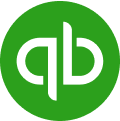BLOG PAYROLL & PENSIONS
It’s almost P11D season - what is it, and why do you have to pay it?
In short, a P11D form allows you to inform HMRC of any benefits you’ve given to employees outside of payroll, so that the correct tax can be paid by your employees. In this blog we take a deeper dive into P11Ds, when they might arise, and what you need to do as a result.We'll also take a look at 'Payrolling of Benefits' and what this means.
Why do you have a P11D?
The P11D is a form used by UK employers to inform HMRC of the value of any benefits provided to employees during their employment each tax year, on which tax is due, which have not yet been taxed through the payroll.
Whether you need to complete a P11D and P11D(b), or just a P11D(b) form will depend on how you’ve given your employee benefits. The forms can be completed online, in physical form (a paper copy can be downloaded here), or by an accountant like us on your behalf.
Which form do I need to complete - a P11D and/or P11D(b)?
If you’ve given your employees benefits via payroll during the tax year, then you will only need to complete a P11D(b) form to report the Class 1A National Insurance owed. A P11D is not required as the benefits have already been reported and the employee taxed on their regular payroll.
However, if you’ve given any employees benefits outside of payroll, then a P11D form will need to be completed for each employee who has received a taxable benefit during the tax year. The Class 1A National Insurance contributions will then also need to be reported on a P11D(b) form.
A quick note here about Class 1A National Insurance - this is a tax paid on expenses and benefits provided to employees (including redundancy pay). The rate changes on an annual basis - you can find the most recent rates on the GOV website here.
What benefits need to be declared on the P11D?
The easiest way to think about which benefits should be included, is that it’s all the usual Benefits in Kind i.e. goods and services offered to employees at a beneficial price (usually much lower than they could obtain themselves). Some examples of benefits you should declare include a company car, medical insurance, low cost loans etc.
HMRC has a helpful A - Z guide on expenses and benefits that should be declared on the P11D, so if you’re still unsure then it’s definitely worth having a look at this.
For the employee, it is possible for HMRC to change their tax code for the new tax year (by reducing their tax-free personal allowance), so that any taxes owed on benefits in kind can be collected through payroll deductions. So if they don’t have the cash to pay when the tax becomes due, this is a helpful option to spread the cost of the charge.
It is your legal responsibility as an employer to ensure that all benefits are declared. Even if your accountant is preparing the P11D form(s) for you, the employer is ultimately responsible for the declaration.
Summary of Key Dates
|
Completed by |
P11D and P11D(b) forms are the responsibility of the employer, and must be completed by the employer, not the employee. If you have freelancers or contractors, then they will complete their own forms. |
|
Submission due by |
Both forms (if relevant) must be submitted to HMRC each year by no later than 6th July following the tax year end. |
|
Payment due by |
Any taxes due must be paid to HMRC by no later than 22nd July each year. |
If you don’t already offer employee benefits, should you?
The working relationship between employees and the employer has shifted in modern times. Employees now have a greater expectation of a satisfactory work-life balance, and are holding employers accountable.
Offering your employees benefits is just one way you can help improve employee satisfaction, and make your team feel valued. Benefits are wide ranging, and don’t have to cost the earth.
Your employees are all likely to value different things, so it can sometimes be difficult to know where to begin. We recommend starting with a simple survey of your staff to find out what they’d value, and see if there are any quick wins or common themes.
Payrolling of Benefits
What does ‘payrolling a benefit’ mean?
Payrolling a benefit means including the taxable value of an employee’s benefit (like private medical insurance or a company car) in their taxable pay for each payroll period. As a result, income tax is deducted directly from their gross pay in real time and sent to HMRC. This process offers an alternative to using forms P11D.
What are the benefits of payrolling benefits?
There are generally three key benefits to processing benefits through payroll:
-
Real-time tax deduction: Since tax is collected as the benefit is provided, employees experience a smoother tax impact. This is particularly beneficial in the first year of receiving a benefit when HMRC might not have updated the employee's PAYE code to account for it.
-
Reduced administrative burden: Payrolled benefits don’t require reporting on forms P11D, easing compliance. However, employers must still provide employees with written details of their benefits at the end of the tax year and submit a form P11D(b) to account for any Class 1A National Insurance contributions due.
-
Simplified processes: Implementing payrolling will require procedural changes, so employers should carefully review their current systems before registering with HMRC.
Can all benefits be payrolled?
Currently, most benefits can be payrolled, with the exception of beneficial loans and living accommodation. HMRC may revise these rules in the future. The exclusion of these benefits is due to the way their value is calculated, which relies on retrospective assessment, making it difficult to tax them in real time.
Payrolling of benefits is becoming mandatory
Currently, payrolling benefits is optional, but it will become mandatory from April 2026.







.jpg?width=1500&height=1000&name=amy-hirschi-K0c8ko3e6AA-unsplash-(5).jpg)

